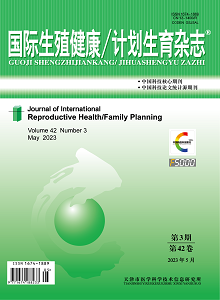Objective: To investigate the effect of growth hormone(GH) supplementation on the clinical outcomes in non-diminished ovarian reserve(DOR) patients with previous in vitro fertilization/intracytoplasmic sperm injection (IVF/ICSI) failure. Methods: It was a retrospective, self-controlled study. The clinical outcomes of the first and second IVF/ICSI cycle in 174 non-DOR patients undergoing the second IVF/ICSI cycle with GH supplement, from January 1st, 2018 to December 31st, 2021 in our center, were analyzed. Results: The gonadotropin(Gn) dosage per day, number of oocytes retrieved, 2PN cleavage rate, high-quality embryo rate, embryo implantation rate and clinical pregnancy rate were significantly increased, and Gn duration were significantly decreased in the GH group compared with control group(P<0.05). The clinical pregnancy rate was not affected by the ovarian stimulation protocol, while the differences of Gn dosage, endometrial thickness, fertilization rate and abortion rate were not statistically significant (all P>0.05). Subgroup analysis indicated that the antral follicle count (AFC), clinical pregnancy rate and live birth rate in the <35 years group were higher than those in the ≥35 years group (all P<0.05),while there were no significant differences in body mass index (BMI), anti-mullerian hormone (AMH), basic follicle stimulating hormone(FSH), Gn duration and dosage, endometrial thickness on the day of embryo transfer, number of oocytes retrieved, fertilization rate, 2PN cleavage rate, high-quality embryo rate, embryo implantation rate and abortion rate between the two groups(all P>0.05). Conclusions: GH supplementation can improve the ovarian function and response, and clinical outcome for those non-DOR patients with previous IVF/ICSI failure, especially for young patients.

